
Joliet Union Station is an inactive Beaux-Arts train station in downtown Joliet, Illinois, built in 1912. Union Station was constructed as part of a large improvement project for the six railroads serving Joliet, which converged on the city as an important rail transportation hub just outside Chicago. At its peak, Union Station served over 100 intercity trains per day, with additional commuter and interurban service.

Theodore C. Link, FAIA, was a German-born American architect and newspaper publisher. He designed buildings for the 1904 World's Fair, Louisiana State University, and the Mississippi State Capitol.
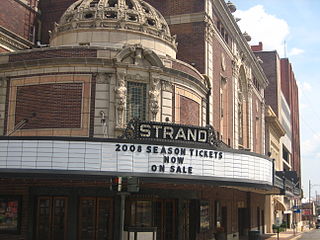
The Strand Theatre in Shreveport, Louisiana, United States, opened in 1925 as a Vaudeville venue and was nicknamed "The greatest theatre of the South" and the "Million Dollar Theatre" by its builders, Julian and Abraham Saenger of Shreveport, owners of the Saenger Amusements Company, which operated theaters throughout the American South and in Central America. By the 1940s it had evolved into a movie cinema, which it remained until its closure in 1977. Threatened with demolition, it was saved by a coalition of concerned citizens who restored it to its original grandeur over a nearly seven-year period. It is the "Official State Theatre of Louisiana". Since its re-opening in 1984 following restoration it has served as a performing arts venue, featuring the Shreveport Broadway Series and other traveling Off-Broadway shows.

Baton Rouge station is a historic train station located at 100 South River Road in downtown Baton Rouge, Louisiana. It was built for the Yazoo and Mississippi Valley Railroad which got absorbed by the Illinois Central Railroad. The station was a stop on the Y&MV main line between Memphis, Tennessee and New Orleans, Louisiana. The building now houses the Louisiana Art and Science Museum.
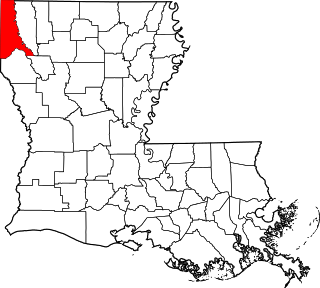
This is a list of the National Register of Historic Places listings in Caddo Parish, Louisiana.
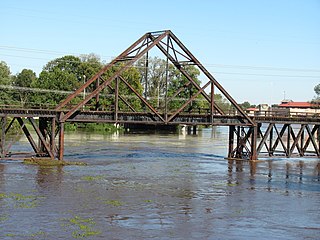
The Kansas City Southern Railroad Bridge (Cross Bayou), in downtown Shreveport, Louisiana, is an "A" Truss bridge erected in its current location in 1926 and abandoned in the 1980s. Due to its national significance to the progress of American bridge design, and its rarity as one of only two known surviving examples, the structure was designated a National Historic Place in 1995.

Shreveport Municipal Memorial Auditorium is a historic performance and meeting venue at 705 Elvis Presley Boulevard in Shreveport, Louisiana. It is an Art Deco building constructed between 1926 and 1929 during the administration of Mayor Lee Emmett Thomas as a memorial to the servicemen of World War I. In 1991, the auditorium was listed on the National Register of Historic Places and on October 6, 2008, it was designated a National Historic Landmark.
The Jefferson Hotel in Shreveport, Louisiana is a four-story brick railway hotel that was built in 1922. It was listed on the National Register of Historic Places in 1989. It also became a contributing property of Shreveport Commercial Historic District when its boundaries were increased on May 16, 1997.

Holy Trinity Catholic Church in Shreveport, Louisiana was built in 1896. It was listed on the National Register of Historic Places in 1984. The current structure is the third church, with the first being constructed in 1856 by Fr. Jean Pierre, who became the first pastor. During the city's Yellow Fever epidemic of 1873, Fr. Jean Pierre and his assistant pastor, Fr. Isidore Quemerais, both gave their lives while caring for the sick and dying.
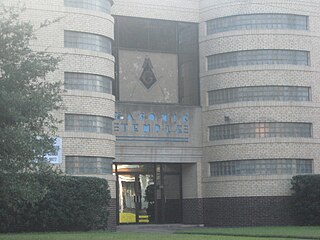
The Masonic Temple in Shreveport, Louisiana is a historic building located at 1805 Creswell Avenue in Shreveport, Louisiana. Built in 1937 in Moderne style, it is a two-story brick building designed by architect Theodore Flaxman, who indicated that he was strongly influenced by the curvilinear buildings of European modernist Erich Mendelsohn.

The Union Passenger Station in Tacoma, Washington, United States, opened in 1911. It was listed on the National Register of Historic Places in 1974. It now serves as a courthouse of the United States District Court for the Western District of Washington. The distinctive architecture, dominated by a copper dome, is a landmark for the area.

The U.S. Post Office and Courthouse in Shreveport, Louisiana, was built in 1910. It was designed in Italian Renaissance architecture style by James K. Taylor and James A. Wetmore. It served historically as a courthouse and as a post office.
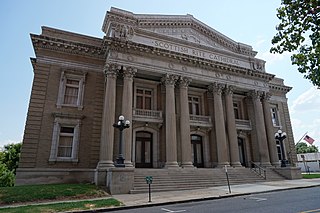
The Scottish Rite Cathedral is a historic building located at 725 Cotton Street in Shreveport, Louisiana. It was designed in 1915 by architect Edward F. Neild in Beaux Arts style.

The Church of the Holy Cross (Episcopal), which housed St. Mark's until 1954, is a historic church at 875 Cotton Street in Shreveport, Louisiana, United States. The first services of the Episcopal church in Shreveport were celebrated by the Rt. Rev. Leonidas Polk, the Bishop of Louisiana in March 1839. That liturgy is considered the founding day of St. Mark's Church. Prior to this church building, the church was located on Fannin Street. St. Mark's moved into a new church building at Fairfield Avenue and Rutherford Street in 1954. That church became the cathedral of the Diocese of Western Louisiana on July 7, 1990.

The Kansas City Southern Depot is an historic train station, located at 400 Lake Charles Avenue, in DeQuincy, Louisiana. The depot is currently home to the DeQuincy Railroad Museum.
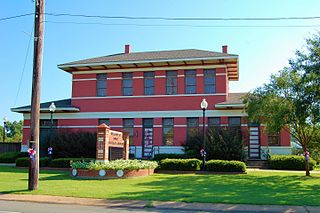
Bunkie station is an historic train station in Bunkie, Louisiana.

Elizabeth is a disused train station in Elizabeth, New Jersey. It was built by the Central Railroad of New Jersey (CNJ) in 1893. It is adjacent to NJ Transit's Elizabeth station on the Northeast Corridor. That station was built and owned by the Pennsylvania Railroad; in the era of private operation passengers could transfer between the two. The CNJ right-of-way in Elizabeth is unused, and passenger trains which served the former CNJ mainline bypass Elizabeth via the Aldene Connection on their way to Newark Penn Station. The station has been renovated and used as commercial space.
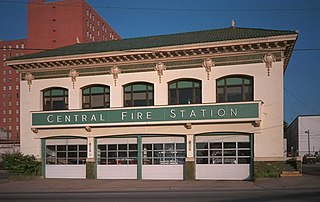
The Central Fire Station in Shreveport, Louisiana, at 801 Crockett St., was built in 1922. It was listed on the National Register of Historic Places in 1991. The listing included two contributing buildings.

The South Highlands Fire Station, at 763 Oneonta in Shreveport, Louisiana, was built in 1929. It was listed on the National Register of Historic Places in 1991. It has also been known as Fire Station No. 10.

The South Main Street Historic District in Memphis, Tennessee, is located south of the city's central business district encompassing over 100 mostly commercial buildings spread across 11 blocks. The area was constructed between 1900 and 1930 in a wide range of early-twentieth-century architectural styles including Beaux Arts, Georgian Revival, Art Deco and Chicago Commercial. The district was added to the National Register of Historic Places in 1982 as an area of Memphis representing the impact of the railroad on the city during the a period of railroad-led prosperity that ended with the Great Depression. The district includes the Lorraine Motel, constructed in 1925, where Martin Luther King Jr. was assassinated in 1968. The South Main Arts District is a smaller area within the historic district. The district is also a City of Memphis local historic district or Historic Overlay District.























